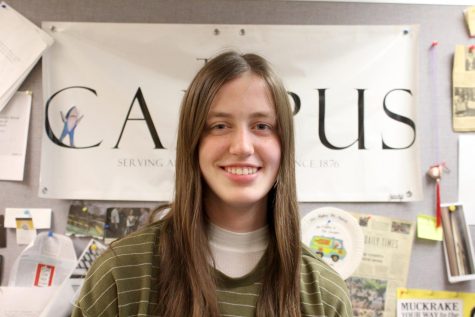Hurricane Ian second Category 4 this season
Students, faculty feel effects in Florida and beyond
Hurricane Ian is tied for the fifth-strongest hurricane to land in the United States, with wind speeds of up to 150 mph. Following Hurricane Fiona, Ian is the second Category 4 hurricane to hit this season, setting the United States on track to have yet another above-average hurricane season, according to the National Oceanic and Atmospheric Administration. So far, it has killed 119 people and devastated communities with its after-effects.
Assistant Professor of Environmental Science and Sustainability Matthew Bethurem pinpointed the reason behind this increase in storms: climate change — an issue that the U.S. government has known about for years and done very little to fix.
“It’s going to take some kind of a revolution,” Bethurem said.
According to NOAA, Hurricane Ian first passed through Cuba as a Category 3 hurricane on Sept. 26, wiping out the nation’s power system. On Sept. 28, the storm intensified into a Category 4 hurricane and landed near Cayo Costa, Florida. By Sept. 29, Ian was downgraded to a tropical storm as it traveled across Florida and it fizzled out after briefly being a Category 1 in South Carolina on Sept. 30.
Despite only lasting a couple of days, the impacts from Hurricane Ian will take weeks, possibly months to recover from. Florida native Ocean Parodie, ’23, explained that recovering from a hurricane is a tedious process that involves both waiting out the aftermath of the storm and restoring what it damaged.
“You don’t get to do much unless you like fishing,” Parodie said.
Floods are a major issue to contend with in the aftermath of any hurricane. They are dangerous for a number of reasons.
“The water just sits there and turns into mud,” Parodie said. “If your car wasn’t lifted, it was getting destroyed.”
Additionally, he said that after storms like Ian, it is common for alligators to get out of the canals and into other waterways.
Floods, however, are not the only issue to be dealt with after hurricanes. Parodie recalled that in the aftermath of Hurricane Katrina, kids at his school did not have power for months.
“It would be nice to receive more help from other states,” Parodie said.
He urged others to do what they can to help out either by donating food, money or other important goods.
As for weather patterns, Parodie noted that he has seen an increase in the number and intensity of storms traveling across the east coast.
Bethurem backed up this claim, explaining how the warming of the atmosphere as a result of climate change led to these changes in hurricane patterns.
“What we’ve got is a warming planet and a lot of that extra heat is being absorbed by the oceans,” Bethurem said. “Those hot ocean waters are what fuels hurricanes — the fact that more heat is being added to those systems means that those storms are going to be able to form easier in a lot of cases, and once they do form there’s a much greater likelihood that they are going to be stronger storms.”
Bethurem explained the solution to this crisis in two steps. First, reduce the amount of carbon emissions. Second, put in place more adaptation measures to fix the damage done to these coastal areas.
“The thing that we should be doing literally right this minute — and that we should have been doing for a long time — is reduce our emissions,” Bethurem said. “Every bit of carbon that we add to the atmosphere is making this problem worse.”
Adaptation measures are both physical changes to the environment to restore it and nonphysical policies to help those negatively impacted by climate change, Bethurem explained. One example he gave was resettling communities in coastal areas.
According to Bethurem, the only way that these changes will be implemented is if a group of people come together and push for change.
“It revolves around a lot of ordinary people coming together around these issues to force them into being a priority for the country,” Bethurem said.
One solution, Bethurem hypothesized, is to bring together social and environmental justice groups over climate change and have them push the fight for change, similar to the Civil Rights Movement of the 1960s. Bethurem also noted that the rising push towards labor unions, for example the formation of unions at Chipotle, Starbucks and Home Depot, is a step in the right direction for the United States.
“People aren’t going to sit down and just die,” Bethurem said. “Maybe we can’t stop a hurricane from coming, but maybe we can at least stop raw sewage from going out into the environment.”

Caroline Maye is a first year from Chicago, Illinois. She plans to major in Political Science or History with a minor in Journalism in the Public Interest....








